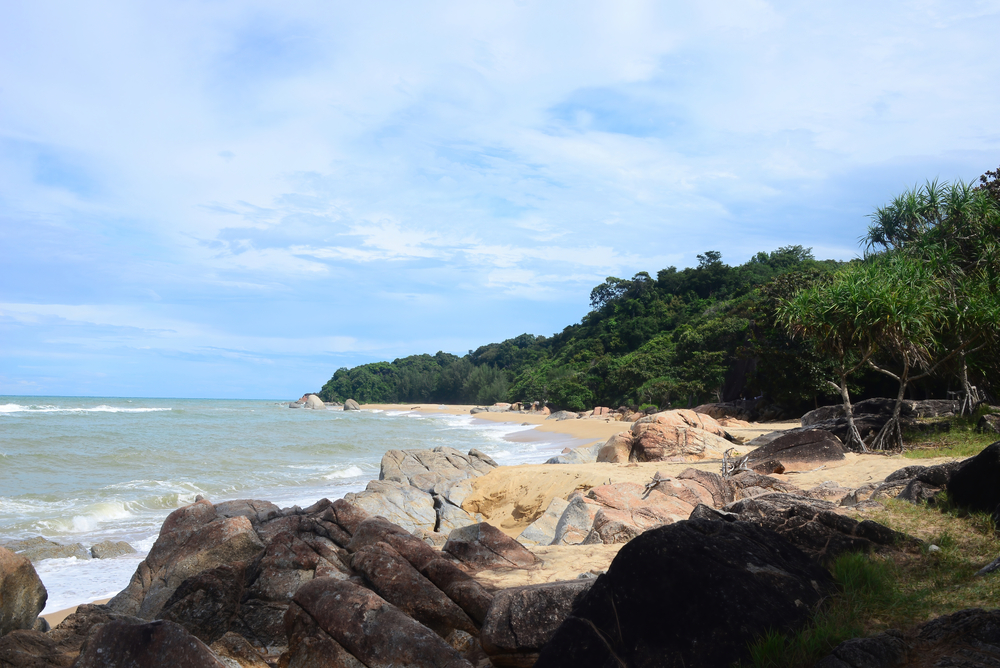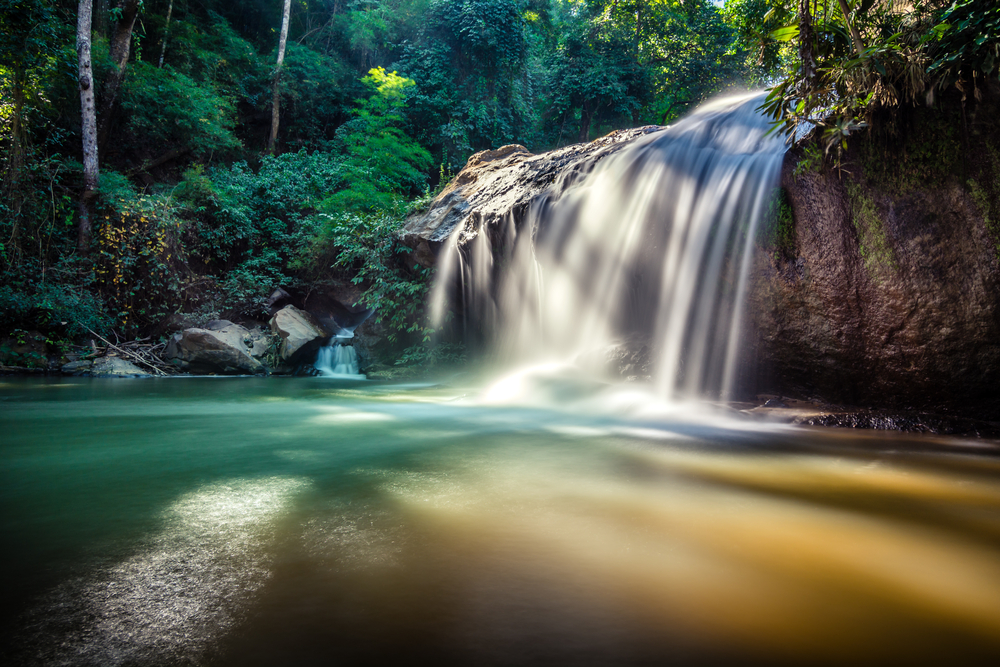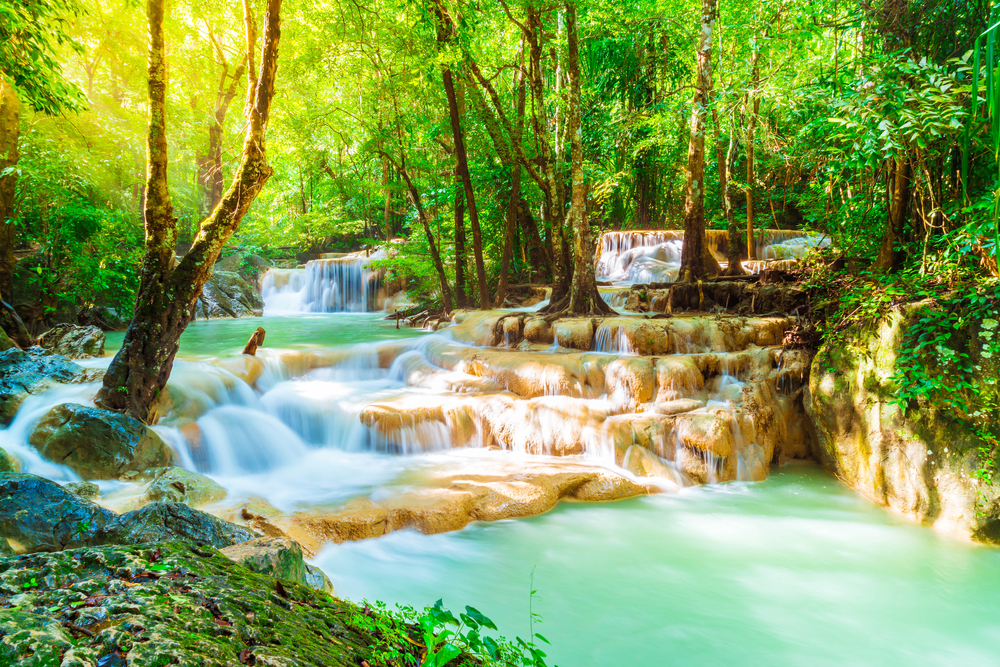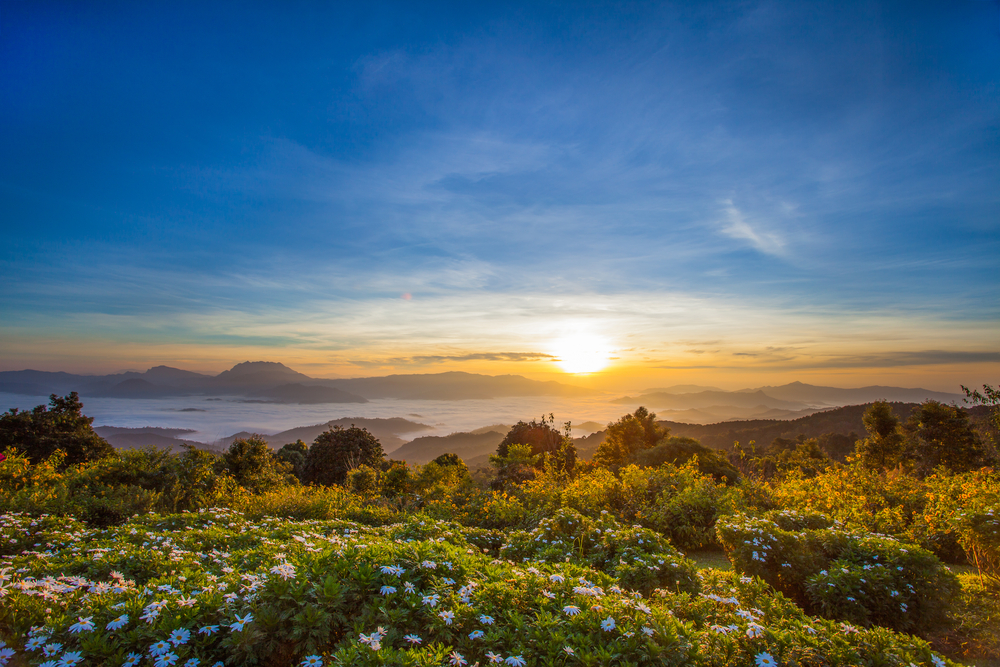Mae Ping Overview
Mae Ping National Park, known locally as “อุทยานแห่งชาติแม่ปิง,” is a captivating natural reserve located in northern Thailand, spanning the provinces of Lamphun, Chiang Mai, and Tak. Covering an area of approximately 398 square miles (1,031 square kilometers), the park offers an enchanting blend of lush forests, dramatic landscapes, and serene river systems.
Its geographical location near the Ping River gives it a unique ecological character, making it a cherished destination for nature enthusiasts and travelers seeking tranquility and biodiversity. The terrain of Mae Ping National Park is diverse, featuring rolling hills, dense evergreen forests, and striking limestone karsts. The Ping River, a key feature, meanders through the park, forming picturesque valleys and small waterfalls that add to the scenic charm.
Doi Mae Ya, one of the prominent mountains within the park, rises as a dramatic focal point, offering sweeping views of the surrounding landscapes. Bamboo forests, teak woodlands, and patches of mixed deciduous trees create a rich mosaic of vegetation, while vibrant wildflowers add seasonal bursts of color to the scenery.
Wildlife in Mae Ping National Park is abundant and varied. Visitors might encounter mammals such as Asiatic black bears, wild boars, and barking deer. The park is also home to several smaller species, including civets and porcupines, which are more elusive but equally fascinating.
Birdwatchers will delight in the park’s avian diversity, with species like the great hornbill, Asian paradise flycatcher, and emerald dove commonly spotted. The rivers and streams within the park also support aquatic life, adding another layer of biodiversity to its ecosystem.
Mae Ping National Park is renowned for several popular attractions, including the striking Ko Luang Waterfall, a multi-tiered cascade with emerald-green pools perfect for swimming. Another highlight is the “Kaeng Luang Rapids,” where visitors can enjoy the soothing sounds of flowing water amidst a peaceful natural setting. The park also features the surreal beauty of limestone caves, such as Tham Chiang Dao, adorned with impressive stalactites and stalagmites.
Visitors can experience the park through various activities, including hiking along its well-maintained trails, birdwatching, and guided boat tours on the Ping River. Camping is a favorite way to immerse oneself in the park’s serene environment, with designated areas providing opportunities to stargaze under clear skies. For those seeking cultural connections, the nearby local villages offer insights into traditional Thai lifestyles and customs.
Conservation efforts in Mae Ping National Park focus on preserving its rich biodiversity and combating deforestation. Park authorities have worked to restore degraded areas, replant native tree species, and educate local communities about sustainable practices. Despite challenges such as illegal logging and wildlife poaching, the park has made strides in maintaining its ecological integrity through vigilant management and collaboration with conservation organizations.

















































































